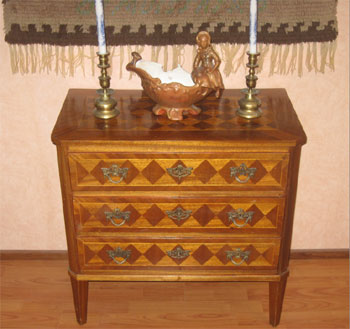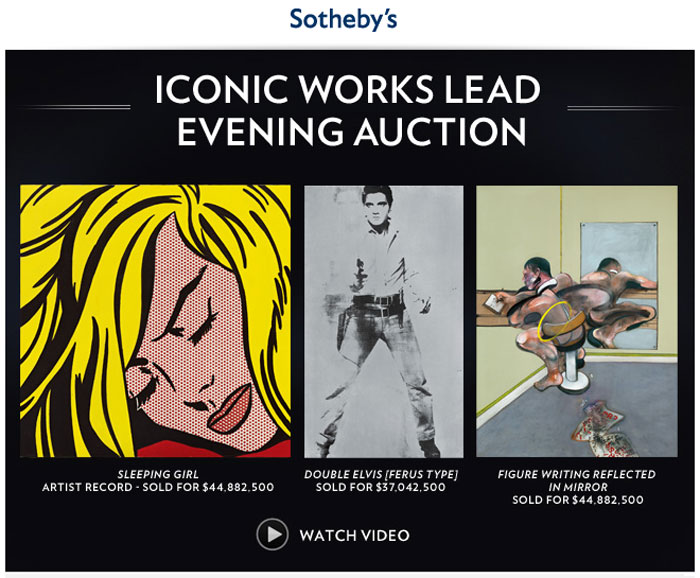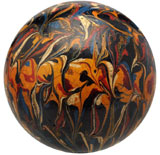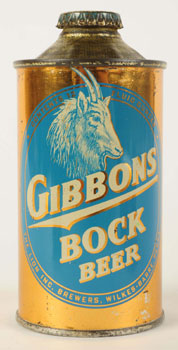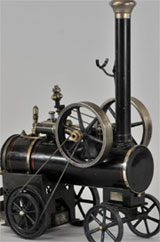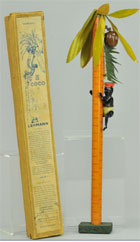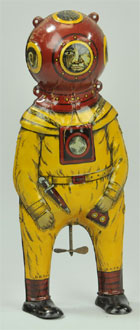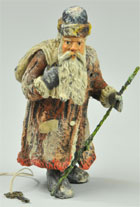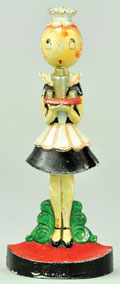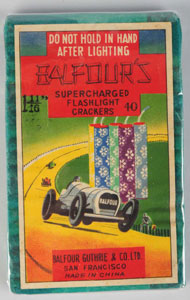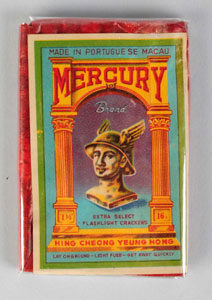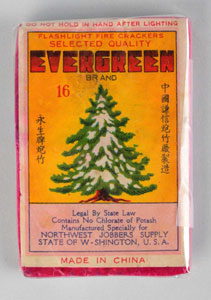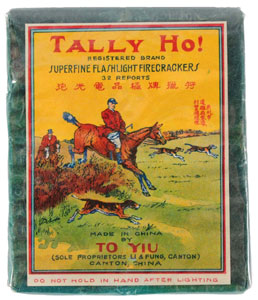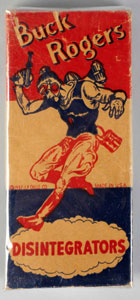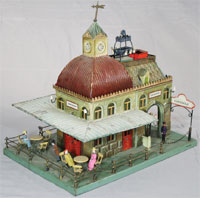
Circa-1905 Marklin ‘Café’ train station with many papier-mache figures, ex Ward Kimball collection. Est. $18,000-$25,000. RSL Auction Co.
TIMONIUM, Md. – Fine European antique toys and train stations, plus a fabulous array of still and mechanical banks are at the heart of RSL’s 621-lot auction to be held July 1, 2012 at Richard Opfer’s gallery in Timonium (suburban Baltimore), Maryland. Titled “Toys, Train Stations, Banks & Americana,” the auction’s wonderfully varied selections include the John Jirofsky architectural still bank collection, the late Dr. James Laster’s collection of train stations, and other carefully chosen additional consignments.
A longtime collector, Jirofsky is a member of both the MBCA and SBCCA, a reflection of his penchant for both mechanical and still banks. “We sold John’s mechanical banks in June of last year; now we have his still banks, which were his true collecting passion,” said RSL partner Ray Haradin. “There’s great diversity in his collection, especially among the painted buildings. It contains the only known example of the ‘1905 Bank.’” Having an almost mosque-like appearance with its tall spires, the 1905 Bank could cash out at $12,000-$18,000.
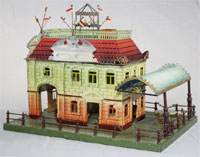
Gebruder Bing 1 gauge train station with patio, circa 1910. Est. $4,000-$6,000. RSL Auction Co.
Another highlight is a red Palace Bank with exceptionally fine detailing and a smooth, lustrous patina. It is expected to make $10,000-$15,000.
From a different consignor comes a rare and exceptional 1890s polychrome-painted Ives Santa bank, complete with a removable wire Christmas tree accessory. The bank’s gilt-edged trail of provenance includes the distinguished Leon Perelman and Donal Markey collections. The presale estimate is $8,000-$12,000.
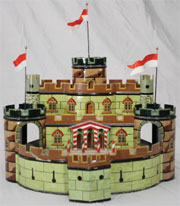
Marklin three-tiered castle, circa 1895, parade ground moves when connected to steam engine. Est. $14,000-$20,000. RSL Auction Co.
RSL is honored to have been chosen to handle the European train station collection of the late Dr. James Laster, whose specialty was German 1 gauge. Fifteen train stations from the Laster collection will be lined up to meet their new owners on auction day, including a large, circa-1905 Marklin Café station (1 Gauge) ex Ward Kimball collection. It could bring $18,000-$25,000, Haradin said.
A circa-1910 Bing station with patio, in excellent condition, is entered with hopes of realizing $4,000-$6,000. There will also be a host of other, smaller Bing, Marklin and J. Krauss stations from the early 1900s.
The magical Marklin name will also be represented by a circa-1895 three-tiered castle. “It’s a pristine example from the Lutz /Marklin era and should sell for $14,000-$20,000,” Haradin said. Other Marklin prizes include a horse-drawn stagecoach with driver, est. $6,500-$9,500; and a large Marklin Jolanda riverboat, est. $12,000-$18,000.
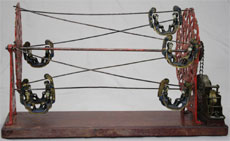
Circa-1895 Hubley Toy Co. Gondola Amusement Park Ride, clockwork cast iron, brass and wood. Est. $30,000-$40,000. RSL Auction Co.
A first-rate assortment of American tin toys is highlighted by a circa-1885 Ives “Giant” locomotive. Measuring an impressive 17½ inches long, the Giant was the largest locomotive of the American clockwork-toy era. One of only four known, the entry in RSL’s sale is estimated at $12,000-$18,000.
Two other clockwork treasures to be sold are a circa-1875 Ives Stump Speaker in pristine condition, est. $5,000-$7,000; and one of only about 6 extant examples of an Ives Nursemaid, also known as “Old Aunt Chloe.” The toy is meant to depict a black nanny caring for a white infant. Estimate: $7,000-$9,000.
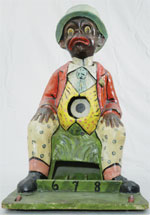
German painted papier-mache and cardboard ‘Black Dandy’ ball toss, circa 1895. Est. $5,000-$7,000. RSL Auction Co.
Cast-iron American toys exhibiting particularly fine condition include a “super-mint” circa-1905 Uncle Sam Chariot, made by Kenton Hardware and retaining an unbelievable 99.5% of its original paint. The 12-inch-long patriotic toy, whose chariot replicates an American eagle, is expected to achieve $15,000-$25,000 at auction. Right alongside it is one of the rarest of all Hubley toys, a Gondola Amusement Park Ride, with intricately cast ironwork on its wheels. The 19-inch-long toy, whose condition is rated “excellent,” is estimated at $30,000-$40,000.
A featured section of the sale is devoted to antique European character and automotive toys by such makers as Lehmann, Nifty, Schuco and the coveted French brand Fernand Martin, whose “Orange Vendor” and “Gendarme,” est. $3,000-$4,000, are rarely seen. European automotive toys will follow their category’s leader, a deluxe model Fisher Taxi with rare leather canopy and two female passengers, est. $3,500-$5,500.

J. & E. Stevens Bread Winners cast-iron mechanical bank, circa 1886. Est. $26,000-$32,000. RSL Auction Co.
A grouping of 18 character toys and other items with a black theme will be led by a circa-1895 papier-mache and cardboard Dandy Ball Toss. German made and displaying bright, appealing colors, the toy is designed so the “dandy” nods his head when a ball is successfully tossed into an opening in his midsection. Est. $5,000-$7,000.
It wouldn’t be an RSL auction without high-end cast-iron mechanical banks. The July 1 sale includes around 175 mechanicals, many in near-mint condition. Among the top lots is a circa-1886 J. & E. Stevens Bread Winners bank designed by Charles Bailey. With pristine paint, it has the potential to realize $26,000-$32,000.
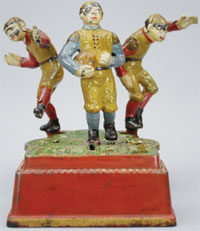
J. & E. Stevens Calamity cast-iron mechanical bank, circa 1905. Est. $35,000-$55,000. RSL Auction Co.
Other coveted classics include a superior circa-1905 J. & E. Stevens Calamity bank, est. $35,000-$55,000; and a near-mint circa-1888 Kyser & Rex Butting Buffalo, $20,000-$30,000.
The perfect “go with” for a mechanical bank is an illustrated trade card. RSL’s sale will include approximately 10 trade cards advertising mechanical banks, including a relatively rare “Bad Accident.” Some of the cards are ex Bob Brady collection.
All forms of bidding will be available in RSL’s Sunday, July 1 auction, including Internet live bidding through www.LiveAuctioneers.com. The sale will begin at 9:30 a.m. Eastern Time, with a preview from Tuesday, May 26 commencing at 12 noon through Sunday morning prior to the auction. A complimentary cocktail party preview will be held at the gallery on Thursday, May 28 from 5:30-8:30 p.m.
For additional information, call Ray Haradin at 412-343-8733, Leon Weiss at 917-991-7352, or Steven Weiss at 212-729-0011. E-mail raytoys@aol.com or geminitoys@earthlink.net. Visit RSL Auction Co. online at www.rslauctions.com.

